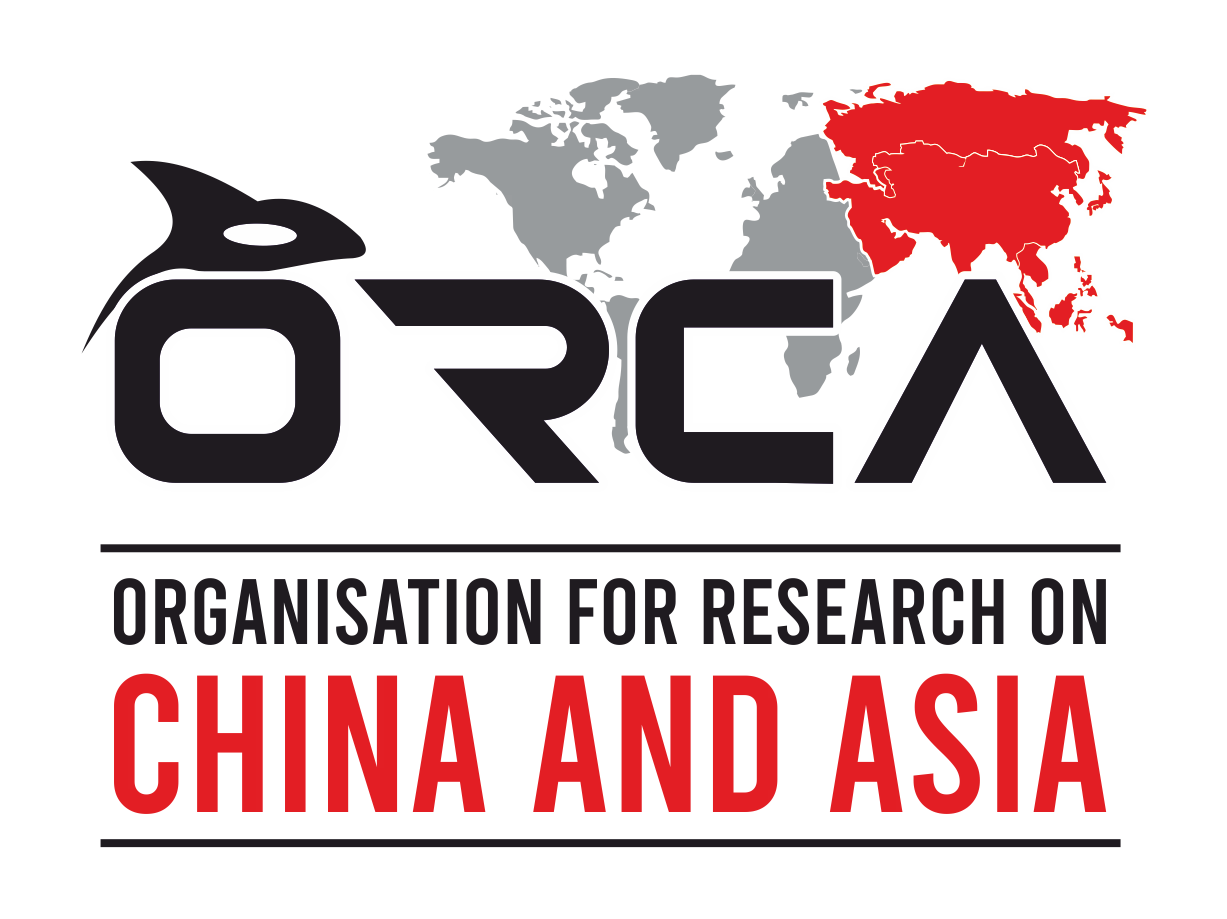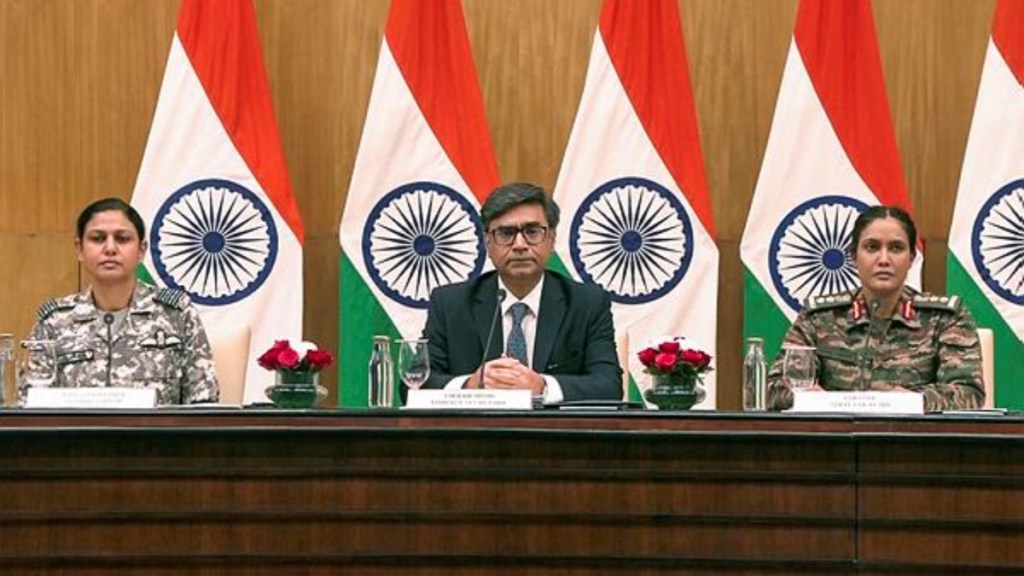On 12th May 2025, precisely twenty days after Pakistan-backed The Resistance Front’s (TRF) brutal terror attack in Pahalgam claimed 26 civilian lives, Indian Prime Minister Narendra Modi declared retaliatory military action as part of a new security doctrine. The strikes under Operation Sindoor targeted terrorist infrastructure not only in Pakistan-occupied Kashmir but also deep within Pakistan’s provinces, signalling a decisive evolution in India’s counterterrorism posture. This announcement was not merely a demonstration of operational capability against an adversarial power but was also a formal articulation of a new strategic doctrine, where any terrorist attack upon Indian citizens would be met with punishing retaliation.
Equally critical, however, was the parallel domain in which this conflict unfolded — one situated within the arena of narrative warfare. In the contemporary information age, the efficacy of military operations is no longer assessed solely by tangible outcomes on the battlefield, but increasingly by the ability to control, construct and disseminate compelling narratives. In this context, New Delhi’s response to Pahalgam transcended the operational logic of counterinsurgency or tactical reprisal. It was simultaneously a symbolic gesture, a strategic manoeuvre and a communicative act, designed to assert authority and reinforce state legitimacy in the face of asymmetric challenges.
From the outset, India framed the Pahalgam attack as the first act of escalation that compelled New Delhi to retaliate against terrorist outfits functioning from within Pakistan and directly designated Islamabad as an enabler of such organisations. The objective was to craft a strategic narrative that projected strength, asserted moral clarity, and shape both domestic and international perceptions. The government’s messaging, throughout the days of the conflict, also invoked cultural imagery, highlighted indigenous precision-strike capabilities and emphasized upon the legitimacy of its actions as defensive and necessary. However, in the day following the conflict, limitations in New Delhi’s narrative projections also revealed the need for a more institutionalized approach to crafting its strategic messaging and the need to further echo its strategic concerns.
India’s Post-Attack Messaging and Strategic Communication
An overview of recent scholarship on Strategic Narratives Theory posits that states seek to shape the international order by constructing compelling stories about the nature of the international system, their role within it, and the legitimacy of their actions. The formation, projection, and reception of strategic narratives form a cyclical process, where policymakers craft narratives, project them through various channels and then adapt them based on audience interpretation and feedback. The effectiveness of a strategic narrative thus depends not only on its coherence and clarity but also on its resonance with both domestic and international audiences.
Within this theoretical framework, a key moment in New Delhi’s narrative shaping emerged during the press briefings led by the India Foreign Secretary in the aftermath of the Pahalgam attack as well as Operation Sindoor. These briefings, both theoretically and practically, achieved three critical objectives that collectively set the tone for India’s strategic communication. Firstly, they established a clear moral frame by positioning the attack as an assault on civilian life and regional peace. The use of phrases like “extreme barbarity” and asserting New Delhi’s military retaliation as “measured, non-escalatory, proportionate, and responsible” not only invoked a sense of moral clarity but also framed India’s response within the paradigm of legitimate self-defence.
Second, the briefings articulated India’s strategic intent by underscoring a decisive shift from a reactive to a deterrence-based posture. This messaging projected clearly New Delhi’s resolve to escalate the costs of cross-border terrorism and laid the groundwork for a broader military and diplomatic action under Operation Sindoor.
Third, the briefings also served as a vehicle for international messaging. Delivered mostly in English and Hindi and disseminated widely across global media platforms, they were crafted to pre-emptively address international concerns, affirm India’s commitment to restraint and proportionality, and delegitimize Pakistan’s anticipated counternarratives. Such early interventions played a significant role in anchoring the Indian narrative before Pakistan's counter-messaging gained momentum.
Notably, New Delhi’s narrative-strategy was also no longer confined to its military posturing. The decision to place the Indus Waters Treaty in abeyance, for instance, conveyed a broader strategic message, that all bilateral engagements were now conditional to counterterrorism compliances. This integration of policy and messaging marked a meaningful advance in New Delhi narrative strategy, posing an important escalation in terms of both actions and rhetoric. Similarly, the articulation of red lines around zero tolerance for cross-border terrorism consolidated an already emerging security doctrine, delivering an early narrative edge by setting the terms of debate, while Pakistan initially remaining reactive.
However, despite these strengths, India's messaging also faced serious challenges. A barrage of misinformation circulated across social media, diluting official narratives and muddling public perception. While New Delhi was responding to Islamabad’s military provocation, Pakistan’s narrative machinery moved with sophistication, especially within Western media ecosystems. Coordinated messaging from Pakistani Foreign, Defence and Information Ministers, amplified by diaspora networks and international broadcasters, often outpaced India’s more formal communication approach. Moreover, several Western media outlets, operating on incomplete information, questioned the legitimacy and proportionality of India’s actions, highlighting a persistent vulnerability in New Delhi’s global information outreach.
Although the Indian narrative eventually reached international audiences, this occurred largely through the episodic interest of the Western media outlets. In the absence of early and visible diplomatic presence in international press, India ceded interpretive space, which was only won back after top Indian diplomats across the West reacted to Pakistan’s counter-narrative strategies.
Even though Western media outlets have a historical tendency to underplay New Delhi’s strategic and security concerns, it remains critical that India does not concede narrative space at the global level. In the realm of international perception, seizing control of initial impressions and being the first to interpret and justify actions is central to an effective narrative strategy. Allowing adversarial narratives to take root early can shape global opinion in ways that are, at times, difficult to reverse.
The recent conflict under such imperatives, has therefore revealed how far India’s narrative strategy has evolved, and how much further it needs to go. On the digital front too, real-time disinformation response was largely uneven. In cases like the viral Rafale allegations, India’s response came several days too late by which time misinformation about the nature of losses incurred had already shaped perceptions. A faster reaction could have disrupted the virality loop and mitigated reputational damage. Although the press briefings did fact-check many such disinformation attempts, a coordinated real-time response could have aided New Delhi in shaping the perception in its favour far more greatly.
Toward a National Comprehensive Narrative Strategy
The post-Pahalgam period revealed both the promise and the limitations of India’s current narrative architecture. While there were signs of strategic clarity and symbolic resonance, the fragmented and reactive nature of India’s messaging at times highlighted the urgent need for a more structured approach. What New Delhi’s security apparatus now requires is a National Comprehensive Narrative Strategy (NCNS), an anticipatory, integrated, and institutionalized framework capable of operating across diplomatic, cultural, and digital domains with agility and coherence.
A forward-looking NCNS should be built on four key pillars. First, it must include real-time disinformation response units within relevant ministries as well as the National Security Council Secretariat to counter emerging misinformation swiftly and effectively. Second, the establishment of integrated strategic communication team/taskforce during wartime situation is of vital importance. Such a taskforce should bring together diplomats, defence spokespersons, national security experts, cultural ambassadors, and digital influencers to ensure coherence in messaging across platforms and stakeholders. Third, institutional partnerships with academia, think tanks, and media are crucial to lend credibility, depth, and nuance to India’s narratives, especially in contested global spaces where counter-narratives are bound to present inconstancies in its rhetorical approach. Finally, global narrative-shaping campaigns must be designed to humanize India’s policy decisions and consistently foreground the concerns and compulsions that shape its actions in times of conflict while simultaneously also projecting its strategic and cultural identity.
The rationale for such an institutionalized narrative framework that is embedded in the ethos of a country’s strategic culture becomes even clearer when viewed through comparative examples. China’s adoption of ‘wolf warrior’ diplomacy, in that way, represents a deliberate attempt to project strength and assertive nationalism in the international arena, but has also often backfired by alienating foreign publics and amplifying perceptions of coercion rather than credibility. The Chinese example is also a reminder that narrative power is not merely about volume or aggression, but more about resonance, legitimacy and alignment with its own strategic culture. For India, whose traditional strategic values have emphasized moral leadership and restraint, the narrative architecture must therefore be crafted in a manner that projects such values and invariably advances national interests without undermining global credibility.
The post-escalation narrative response in many ways offered glimpses of this potential in action and to New Delhi’s credit, the architecture is emerging. The scaffolding of a national narrative strategy is visible in parts; preparation, multidimensionality, and a sense of timing did play out in crucial times. The use of pre-drafted narrative scenarios also enabled the government to assert key red lines swiftly and decisively; strategic messaging extended beyond military signalling to incorporate economic and diplomatic dimensions, demonstrating a more multidimensional approach. However, to truly shape the information battlespace in the years to come, India must formalize and institutionalize this momentum through a comprehensive narrative strategy.
The India-Pakistan episode in the wake of the Pahalgam attack thus presents some clear lessons for New Delhi. In a conflict-prone bilateral relationship, the manner in which India frames its actions morally, symbolically, and visually have as much strategic weight as the military actions in themselves. In the weeks following the Pahalgam attack, the Government of India demonstrated an instinctive grasp of this logic, however, there was limited infrastructure to manage the fast-paced demands of contemporary information warfare during the retaliation phase. Therefore, the imperative now is to transition from reactive narrative responses to a proactive and institutionalized strategy.
A comprehensive narrative plan would enable New Delhi not only to defend its legitimacy but also to actively shape global opinion in its favour. For a rising power like India, a comprehensive narrative strategy is not an avoidable component but is increasingly becoming a necessity for its strategic statecraft, particularly as it ascends the hierarchical international order. The proposal for a National Comprehensive Narrative Strategy, therefore, is not about manufacturing perception but is rather about embedding narrative thinking into India’s strategic culture and behaviour. In future crises, this ecosystem of anticipatory narrative power could prove decisive in both securing legitimacy for New Delhi's actions as well as in shaping and winning the overarching story that follows.
Image Source: ANI



Author
Ratish Mehta
Ratish Mehta is a Senior Research Associate at ORCA. He is the co-editor of the Special Issue on India’s Soft Power Diplomacy in South Asia and serves as the co-lead for the project ‘The Episodes of India-China Exchanges: Modern Bridges and Resonant Connections’, which is rooted in the desire to enhance public consciousness of cross-cultural contributions of both societies. Ratish’s area of interest includes understanding the value of Narratives, Rhetoric and Ideology in State and Non-State interactions, deconstructing political narratives in Global Affairs as well as focusing on India’s Foreign Policy interests in the Global South and South Asia. He was previously associated with The Pranab Mukherjee Foundation and has worked on projects such as Indo-Sino relations, History of the Constituent Assembly of India and the Evolution of its Democratic Institutions. He is also the co-convenor of ORCA's Global Conference on New Sinology (GCNS), which is India's premier dialogue driven China conference. He is an alumnus of Ambedkar University, Delhi.